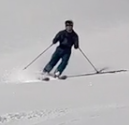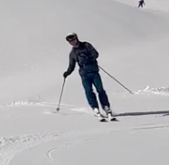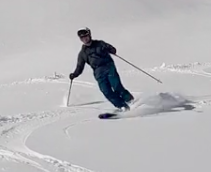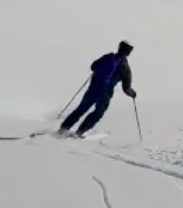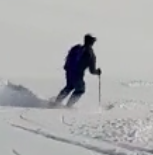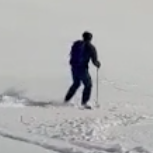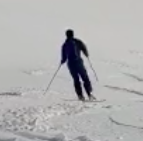- Joined
- Aug 24, 2017
- Posts
- 364
Hey folks,
With great hesitation, I offer these two videos to critique. Please be nice!
5
https://vimeo.com/514271934
This is off-piste skiing with my wife and a guide in Switzerland, where we live. The guide shot the videos, one from above, and one from below. That's my wife in pink, and me in gray.
The conditions were really nice, boot-top powder over a firm base. I was using touring boots and skis, which are much harder for me to control compared to heavier equipment.
The thing that jumps out at me is how static I am, how I have almost no separation or angulation. I think that's because I am generally very unsure and tentative off piste on touring gear. On piste my form is different, but still not great.
In the videos the skiing was easy and fun, but I do struggle off piste when the conditions are poor. That's why I am trying to improve my technique: to manage variable off-piste conditions with safety and enjoyment.
What can I do to get more separation and angulation? How can I be a little looser and more dynamic? Other ideas?
My goal for off-piste skiing is to be more relaxed and dynamic and versatile, able to adapt better changing snow and conditions.
OK, that's it.
Thanks for your help!!!
Bruno
With great hesitation, I offer these two videos to critique. Please be nice!
5
https://vimeo.com/514271934
This is off-piste skiing with my wife and a guide in Switzerland, where we live. The guide shot the videos, one from above, and one from below. That's my wife in pink, and me in gray.
The conditions were really nice, boot-top powder over a firm base. I was using touring boots and skis, which are much harder for me to control compared to heavier equipment.
The thing that jumps out at me is how static I am, how I have almost no separation or angulation. I think that's because I am generally very unsure and tentative off piste on touring gear. On piste my form is different, but still not great.
In the videos the skiing was easy and fun, but I do struggle off piste when the conditions are poor. That's why I am trying to improve my technique: to manage variable off-piste conditions with safety and enjoyment.
What can I do to get more separation and angulation? How can I be a little looser and more dynamic? Other ideas?
My goal for off-piste skiing is to be more relaxed and dynamic and versatile, able to adapt better changing snow and conditions.
OK, that's it.
Thanks for your help!!!
Bruno
